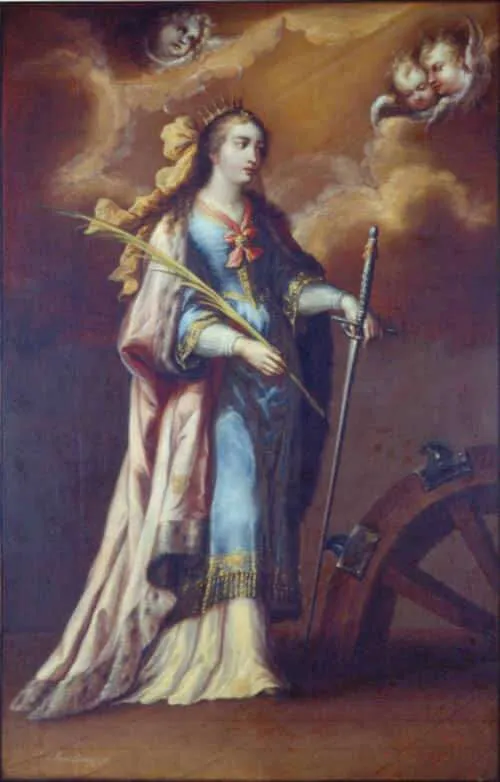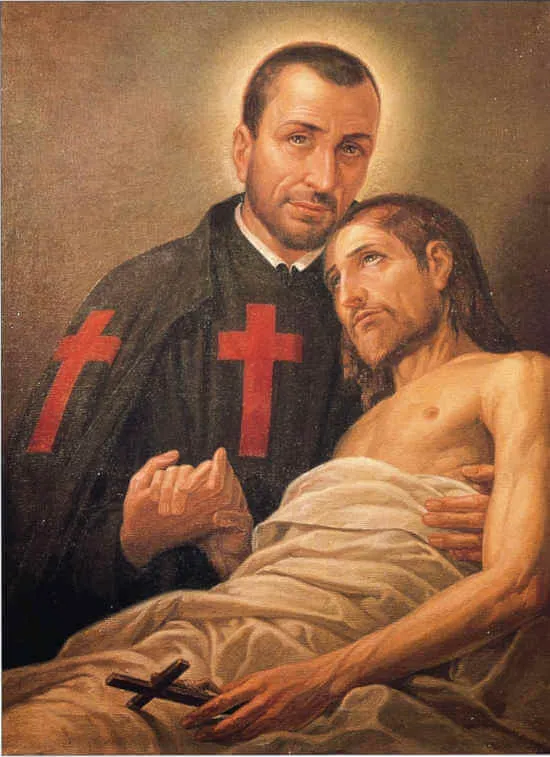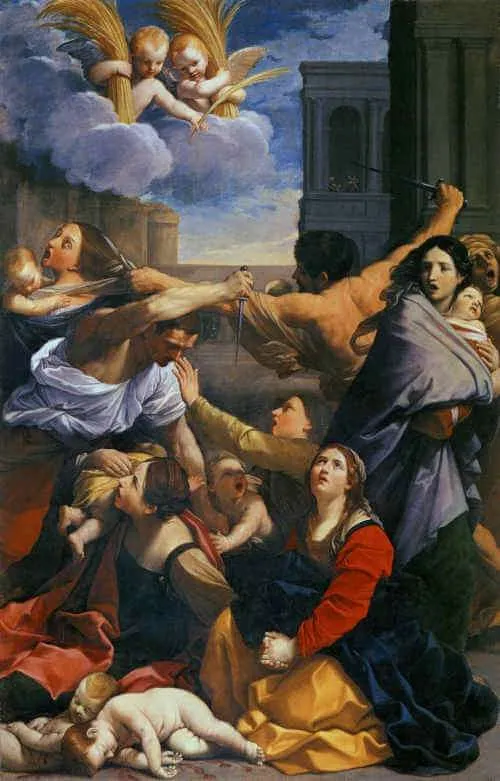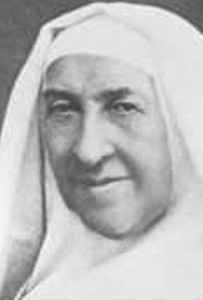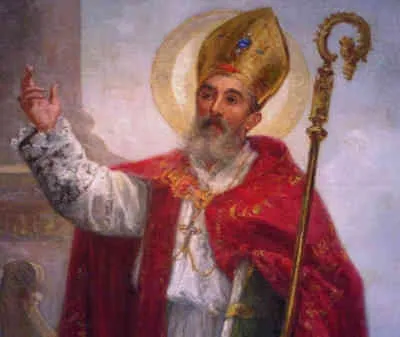Patron Saint of apologists, apprentice milliners and seamstresses, archivists, attorneys, barbers, potters, spinners, the dying, educators, girls, jurists, knife sharpeners, librarians, maidens, mechanics, millers, nurses, old maids, philosophers, preachers, scholars, schoolchildren, scribes, secretaries, tanners, teachers, theologians, and unmarried girls
As a member of a noble family, Catherine received an excellent education and became well versed in literature, poetry, rhetoric, philosophy, music, mathematics, and medicine. Catherine was also of exceptional physical beauty and high moral virtue. Though many noblemen proposed to her, she rejected them all.Unable to find a suitable mate, she sensed within her soul that she was called to something greater.
One day, Catherine’s mother, who was secretly a Christian, introduced her to a holy Christian monk. This monk, in turn, introduced her to her future husband, her Lord Jesus Christ, the future Bridegroom of her soul. In Him, she discovered a man of the greatest wisdom and beauty, whose moral character was unmatched and whose nobility was above all. After speaking about Jesus in detail, the monk gave Catherine an icon of the Blessed Virgin Mary holding her young Son.
That night, Catherine had a dream in which she beheld the Blessed Mother holding her Son. Catherine tried to see the face of the Child, but He kept turning away. She realized that it was because she was not yet baptized that the Christ Child could not bear to look upon her. Soon after, she returned to the monk who had catechized her, and she received baptism.
After Catherine’s baptism, the holy monk encouraged her to beseech the Blessed Virgin Mary. She spent all night doing so and fell asleep while praying. In her dream, the Blessed Mother appeared to her with her Child who took great delight in Catherine and chose her as His bride, giving her a ring, and calling her to embrace earthly virginity. When she awoke, the ring was still on her finger.
A few years later, Emperor Maximinus decreed that all citizens had to offer sacrifice to the Roman gods in the temple. Catherine showed up during the sacrifices and was immediately noticed for her beauty and disposition. She sent word to the emperor that she had vital information for him. Once in the emperor’s presence, Catherine chastised him for his heathen practices and for his decree requiring worship of the false gods. The emperor was not only stunned at her beauty and character, he was also struck by the depth of her wisdom and elegant speech.
The emperor was so impressed that he knew her wisdom needed a response in order to justify his continued persecution of Christians. He then gathered fifty of the wisest men from across the empire to debate Catherine and prove her error. Just the opposite happened. Catherine’s wisdom was so great that she prevailed and won over many of the wise men. She cited the best Greek philosophers to prove her points and to support the truth that Jesus was the Savior and that the Trinity was the One God. Many of the wise men converted, and, as a result, the emperor had them killed.
The emperor then took another approach. He tried to seduce Catherine, offering her half of his kingdom and a place within the royal palace. She refused. The emperor then had her scourged until her blood covered the ground, and he imprisoned her.
While in prison, a dove brought food to Catherine, keeping her healthy and strong. The emperor decided to try one more time to convince her to give up her Christian faith and worship the gods. This time, he threatened her with torture on a large wheel meant to stretch her entire body and spin her to the point of death. Before Catherine was tied to the wheel, an angel made it spin out of control and shatter before everyone’s eyes. The empress then came out and chastised her husband, revealing that she had become a Christian after listening to the wisdom of Catherine. The emperor was so enraged that he had his wife beheaded on the spot.
The following day, Catherine was brought before the emperor again, and this time he ordered her execution by beheading. Within an hour of her execution, angels came and took her body away, laying it on the heights of Mount Sinai where it remained undisturbed and undefiled. A few centuries later, a holy monk in the monastery at the base of Mount Sinai, which was built around the burning bush, had a dream that led him to discover Catherine’s relics. He took her body and buried it in the monastery chapel where she lies today.
Source: https://mycatholic.life/saints/saints-of-the-liturgical-year/november-25—saint-catherine-of-alexandria–optional-memorial


